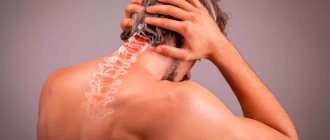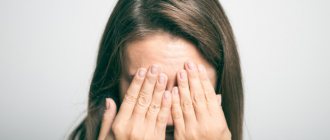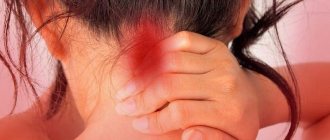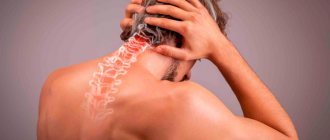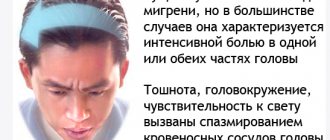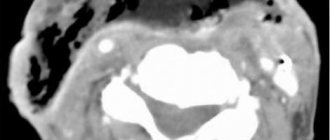Useful articles
Based on statistics, it can be noted that men suffer from migraines less often than women. Migraine manifestations have their own characteristics and differences. The stronger sex endures pain much harder, is less resistant to regular stress and is constantly exposed to a large number of external negative factors. In addition, migraines in men are more aggressive and severe. In practice, the frequency of attacks in male patients is lower than in female patients. These features are of great importance when developing tactics for treating migraine in men.
What is migraine
Migraine is a neurological disorder characterized by unilateral headaches. In some cases, it is accompanied by a set of concomitant vegetative symptoms. Because of them, migraine can be confused with other diseases.
The disease occurs more often in women and can be hereditary. There is a rare type of hemiplegic migraine that is associated with changes in genes on chromosomes 1, 2, and 19. But the role of these pieces of genetic material in the formation of common migraines is still being studied.
Not every headache fits the definition of a migraine. Usually the pathology occurs unilaterally, and the intensity of pain varies. The first signs appear on average at the age of 30 and gradually progress. But there have been rare cases of migraine headaches appearing in children as young as 3 years old. Moreover, boys suffer from migraines more often than girls. And with age, this ratio changes in favor of women.
The exact causes of the pathology are unknown, but it is considered a multifactorial disease. The peculiarity of the course of the pathology is that in women, as menopause approaches, the condition may worsen. But after menopause it stabilizes and the symptoms gradually disappear.
Causes
Most often there is a genetic predisposition and it is transmitted through the maternal line. To do this, it is not necessary that your mother or grandmother suffers from migraines. It could even be a great aunt. But the presence of a genetic predisposition does not immediately lead to the disease; many provoking factors must coincide, which will transform the gene feature into an obvious problem. This means you can reduce your risk by avoiding the following factors:
- high intellectual load without rest;
- heavy physical overload;
- psychological “shake-up” (turbulent emotions, mental stress);
- long work at the computer;
- excessive/insufficient sleep.
Certain foods can provoke new attacks, each with their own (tomatoes, eggs, alcohol). In women, there is a connection between attacks and any hormonal fluctuations: menstruation, pregnancy, lactation, menopause.
Working at a computer for long periods of time can lead to the development of migraines.
Forms of migraine
There are two main forms of the disease. If a headache begins suddenly without previous symptoms, it is considered a migraine without aura. The appearance of visual, olfactory or other disturbances within 60 minutes before a headache attack is called an aura. Moreover, each person suffering from this disease can experience both forms alternately.
The disease can be episodic, with attacks occurring rarely. But if left untreated, the disease becomes chronic. This form includes options in which headaches occur more than 15 days a month for any 3 months over the last six months. Sometimes headache attacks with chronic migraine do not meet all the criteria for pathology and are more reminiscent of tension headaches.
There are different types of migraine:
- retinal migraine – pain is accompanied by blurred vision, sometimes even temporary blindness occurs in one eye;
- periodic syndromes of childhood are headaches in children that, by most criteria, resemble migraines; they usually then develop into a full-fledged disease;
- abdominal migraine – pain in the abdomen occurs before or simultaneously with a headache attack. Children may experience vomiting or nausea beforehand.
- basilar migraine
- hemiplegic migraine
- aura without migraine
Cluster headaches
Cluster headache, or migraine neuralgia, is migraine-like in nature, but is not a true migraine.
More often it occurs in men at night. Severe, sometimes unbearable pain in half of the head is accompanied by a feeling of ear congestion, redness of the eyes and lacrimation, and increased sweating. One such attack can last only a minute, and is repeated in series (clusters) several times a night.
The reasons for the development of the syndrome have not yet been fully studied: irritation of the optic nerve, pathological dilatation of the carotid artery, and testosterone imbalance may be part of the process.
Why does migraine occur?
Neurology describes more than two hundred types of headaches of various origins. Broadly speaking, they are divided into two groups. Primary cephalgia is not associated with any diseases, secondary ones are symptomatic.
Migraine is a primary headache. It is considered a neurovascular syndrome and has long been thought to result from irritation or compression of the neurovascular bundle. But now the disease is associated with increased excitability of certain groups of nerve cells in the brain. Research shows that these neurons have unstable biochemical activity and electrical excitability. Therefore, under the influence of several trigger factors, they are activated and transmit excitation to neighboring cells, forming a focus. The mechanism of propagation of an electrical impulse is similar to an epileptic attack, but this is a completely different disease.
The causes of migraine can be:
- genetic predisposition;
- endocrine disorders;
- stress and sleep disorders;
- poor nutrition;
- weather sensitivity.
In women, the manifestation of primary cephalgia is associated with changes in hormonal levels. Thus, when estrogen levels decrease, migraine episodes become more frequent, and when estrogen levels increase, they disappear. The first attacks may coincide with the first menstruation, but often begin after 30 years. Migraine usually disappears after pregnancy, it practically does not occur in the 2nd and 3rd trimesters.
Certain foods can act as triggers. Each person will have an individual list of them, but most often the connection is traced with the consumption of chocolate, cocoa, coffee, alcohol, strong tea, red wine, beer, legumes or cheese. Therefore, if such a connection is established, it is better to exclude the product from the diet.
Sometimes attacks occur after head and neck injuries, which may be due to a disruption in the blood supply to a certain area of the brain. Mandibular joint dysfunction can also lead to chronic migraines.
In children, attacks occur due to mental or physical fatigue; they can appear after a change of team or place of residence, or other stressful situations.
What causes migraines in men
It has been proven that the most common cause of this disease in men is genetic predisposition. If the parents had the disease, then the probability of it occurring in the children is 90%. This especially applies to migraines, which occur with an aura (a harbinger of an attack).
The following factors can trigger a migraine attack in a man:
- severe fatigue (nervous, physical);
- regular unhealthy diet (dry food, fast eating), abuse of alcohol, chocolate, coffee, nuts;
- pathologies of the central nervous system, blood vessels (arteries) and heart;
- lack of a proper rest, sleep and work regime;
- smoking;
- weather change (sharp);
- severe stress.
Migraine symptoms
Migraines can go through several stages. The prodromal phase occurs in every fourth case. A few hours before this, a disturbance in well-being appears. The person becomes lethargic, irritable, sensitive to sounds and smells. Less commonly, unexplained euphoria develops and hyperactivity appears.
The aura phase (noted in 20% of cases) is expressed in the occurrence of additional symptoms:
- visual impairment;
- the appearance of blind or flickering areas in the field of view;
- tingling in fingertips;
- numbness of part of the face;
- confusion of speech.
Neurological disorders may be more pronounced and resemble an ischemic attack. In this case, sensitivity is impaired, a shaky gait appears, and coordination of movements suffers. Less commonly, confusion, stupor, or disruption of the coordination of movement of body parts appears, which indicates involvement of the brain stem in the process.
The headache itself is pulsating and concentrated on one side. The frontotemporal region is most often affected. But the second half of the head may also be involved. The pain increases gradually, intensifies with physical activity, and weakens at rest. It can last from several hours to three days.
Phono- and photophobia is often associated; loud sounds and bright lights intensify headaches. Therefore, they prefer to be in a dark room in complete silence during an attack. Painful sensations can spread to other parts of the body. Migraines may be accompanied by pain in the neck or scalp.
Cephalgia is often accompanied by nausea, frequent urination, and sweating. Children experience digestive disorders. In older people, the number of accompanying symptoms decreases sharply or disappears completely.
After the attack ends, additional time is required to improve well-being. Many people continue to feel tired, fatigued, and have trouble thinking for several days. Some patients who have suffered a severe attack describe their subsequent state as feeling like a hangover. Disturbances in the functioning of the digestive tract and emotional disorders may persist. Sometimes low mood resembles depression.
Less commonly, after a migraine there is a surge of strength and a feeling of euphoria. How you feel may change with each attack.
Attack phases
The migraine attack itself is divided into several phases, during which it develops and then subsides.
Prodromal phase. Characteristic signs are noticeable several hours before the attack. Sometimes this period increases and they appear in 2 days.
You may note irritability, excitability, sensitivity to light and sounds, irresistible food cravings, increased frequency of trips to the toilet, thirst, lethargy, feeling tired, blurred vision, yawning, drowsiness, slurred speech, impaired concentration, general weakness, lack of appetite.
Aura. Lasts from 5 to 60 minutes, characterized by visual, sensory, motor, and speech disorders.
Painful phase of the attack. This phase can occur after the aura or develop in parallel with it. The pain increases from mild, moderate to intense. Although it is unilateral, the side of the pain can change during one attack. Usually appears in the eye area, in the postorbital, frontotemporal zone. Initially, the pain is dull, gradually turns into throbbing, its intensity increases, and eventually becomes constant and severe. The painful part of a migraine attack can last from 4 to 72 hours.
The pain phase can occur after the aura or develop in parallel with it.
Postdromal phase. After the attack subsides, symptoms of weakness, drowsiness, low concentration, and depression may remain for up to 2 days.
The severity and duration of attacks can vary greatly from person to person, as well as from one person to another.
How to help someone with migraine
Since this type of cephalgia is not a symptom of the disease, it is necessary to eliminate the provoking triggers. To do this you need:
- normalize nutrition;
- avoid skipping meals;
- get enough sleep;
- reduce mental stress;
- engage in moderate physical activity;
- relieve stress.
If you don't know exactly what causes a headache, it can be helpful to keep a diary and write down what preceded the next attack. But it is not recommended to carry out drug therapy on your own. Headache attacks may conceal more serious pathologies that require special treatment. It can be:
- malignant neoplasms of the nervous system;
- transient ischemic attack;
- ischemic cerebral stroke;
- subarachnoid hemorrhage;
- dissection of the carotid or vertebral artery;
- cerebral vasculitis.
For the treatment of migraine, medications are selected depending on the intensity of the attack. For mild forms, non-steroidal painkillers can be used. Evidence of effectiveness is available for the following medicines:
- Aspirin tablets;
- Paracetamol in tablets or suppositories;
- Ibuprofen tablets;
- Diclofenac tablets or injections.
Sometimes, for greater effectiveness, a combination of different types of non-steroidal anti-inflammatory drugs is prescribed: Brustan, Trigan, Panoxen. It is effective to add caffeine to the therapy regimen, as in the tablets Solpadeine Fast, Askofen, Citramon.
If painkillers are ineffective, triptans are included in the treatment regimen. This is a class of substances that are effective in 75% of patients with headaches. They are marketed under the names Sumatriptan and Sumamigren. These drugs have few side effects, but can cause myocardial ischemia in patients with diseases of the cardiovascular system. For those for whom triptans are not contraindicated, the effect can be enhanced with naproxen.
For those for whom triptans are contraindicated, metoclopramide is prescribed. It helps relieve headache attacks and is often used as an emergency remedy. Also in development are new generation drugs that are agonists of serotonin receptors or belong to the group of monoclonal antibodies that block an excess of a certain neurotransmitter.
In children, the only approved drugs are ibuprofen or paracetamol. In adolescence, it is allowed to use their combination Ibuklin Junior.
Migraine prevention
To reduce the likelihood of headache recurrence, lifestyle changes are necessary. If a connection is made with certain trigger factors, it is recommended to avoid them in everyday life. Patients who experience attacks more than 2 times a week are prescribed drug prophylaxis. Topiromat tablets can be used for this; Metoprolol. Magnesium supplements improve the condition of the nervous system.
Physical therapy can help prevent migraines. To do this, work with a psychotherapist is prescribed, and methods of cognitive and behavioral therapy are used. Additionally, massage, acupuncture, physiotherapy and other methods of prevention are used.
Budik Alexander Mikhailovich, neurologist, CMN, chief physician of medical offices 36.6
THERE ARE CONTRAINDICATIONS, BEFORE USE YOU MUST CONSULT WITH A SPECIALIST
Diagnosis of migraine
Diagnosis of the disease is carried out on the basis of clinical attacks, taking into account precursors, frequency, heredity, characteristic disturbances of smell, vision, hearing, taste, autonomic disorders, numbness of body parts.
A set of studies is prescribed. Among them:
- radiography of the skull;
- studies of the vestibular apparatus;
- MRI of the head;
- duplex scanning of the head vessels;
- fundus examinations and others.
In most cases, diagnosis of the disease is based on complaints. At the first appointment, a long conversation is held with the patient. MRI, CT, blood tests, cardiac examinations are carried out to exclude diseases that masquerade as migraines.
